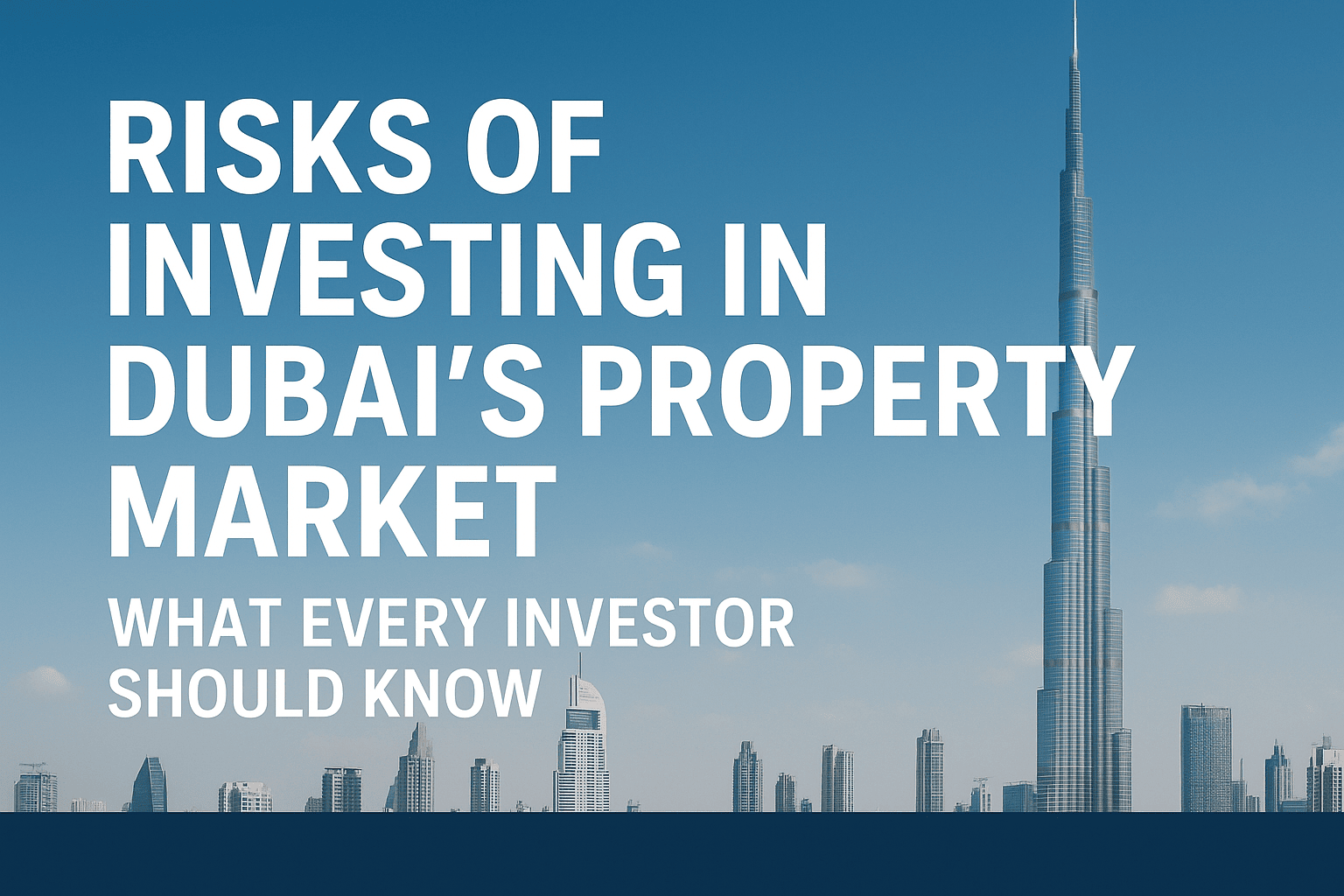
Key Takeaways
- Dubai’s property risks are localized — oversupply in one area may coexist with scarcity in another.
- Off-plan delays remain a concern, though escrow laws significantly reduce default risks.
- Currency exposure and high entry costs make short-term speculation less viable.
- Legal inheritance rules require proactive planning for foreigners.
- Dubai’s market is cyclical, but no longer follows the extreme boom-bust of 2009.
Dubai’s property market offers high yields, strong capital appreciation, and global investor appeal. But like any market, it carries risks that foreign and local buyers must understand before committing capital. While many commentators oversimplify Dubai as a “boom-bust” cycle, the reality is more nuanced. The 2009 crash was triggered by unique global and local factors that no longer apply in the same way, yet risks such as project delays, oversupply in specific sub-markets, currency fluctuations, legal complexity, and high transaction costs remain relevant. This guide outlines the main risks of investing in Dubai real estate, explains why they matter, and shows how informed investors can mitigate them.
Key Risks of Investing in Dubai Property Market
1. Sub-Market Oversupply Risk
Dubai is not a single market — it’s a collection of micro-markets. While prime areas like Downtown Dubai or Palm Jumeirah often face constrained supply, emerging districts such as Dubai South or JVC may experience oversupply. Oversupply reduces rental yields and delays capital appreciation.
Mitigation: Focus on established, high-demand communities with proven track records.
2. Off-Plan Delays & Delivery Risks
Off-plan property sales are common in Dubai. While developers are regulated by the Real Estate Regulatory Authority (RERA), delays can occur. Most Sale and Purchase Agreements (SPAs) allow developers up to a one-year grace period.
Mitigation: Work with Tier-1 developers (Emaar, Meraas, Nakheel) and review project escrow account compliance.
3. Currency Exchange Risk for Foreign Investors
Dubai real estate is priced in AED, pegged to the US dollar. Investors from weaker-currency countries face double exposure: property performance and forex fluctuations.
Mitigation: Time entries during favorable exchange rates or hedge currency exposure.
4. Financing & Interest Rate Risk
While mortgage availability has improved, rates in the UAE follow US Federal Reserve policy due to the AED-USD peg. Rising US interest rates increase borrowing costs in Dubai, affecting affordability and demand.
Mitigation: Lock in fixed-rate mortgages where possible.
5. Legal & Inheritance Complexity
Dubai offers freehold ownership in designated zones, but inheritance for non-Muslims defaults to Shariah law unless a DIFC Will or local court arrangement is registered. This can create complications for families.
Mitigation: Register a DIFC Will or seek legal structuring advice.
6. Significant Transaction Costs
Dubai has no annual property tax, but entry and exit costs remain substantial:
- 4% DLD transfer fee
- 2% broker commission (typical)
- Mortgage registration and bank fees
These factors make short-term flipping less attractive.
Mitigation: Consider adopting a medium-to-long-term investment horizon.
7. Liquidity Risk
Real estate in Dubai is relatively illiquid compared to stocks or REITs. In downturns, selling quickly often requires deep discounts.
Mitigation: Diversify investments and avoid over-leverage.
8. Regulatory & Policy Shifts
While Dubai has improved transparency and investor protection since 2009, policy remains dynamic. Visa-linked property thresholds, LTV ratios, and rental caps can change, impacting returns.
Mitigation: Stay updated with Dubai Land Department (DLD) and RERA announcements.
9. Market Sentiment & Global Factors
Dubai is an international hub, heavily influenced by global capital flows. Events like oil price shocks, geopolitical instability, or global recessions can shift investor sentiment rapidly.
Mitigation: Diversify across asset classes and markets.
Why It’s Not Just “Boom-Bust” Anymore
- The 2009 crash was driven by excessive leverage, lack of escrow protection, and the global financial crisis.
- Since then, regulations (escrow accounts, project-linked payments, RERA oversight) have created a stronger framework.
- While Dubai remains cyclical — like all real estate markets worldwide — cycles today are more moderated and linked to supply-demand balance, not reckless speculation.
Your Next Moves
- Consult a RERA-licensed advisor before investing.
- Compare freehold communities by supply-demand balance on trusted portals.
- Secure a DIFC Will if you’re a foreign buyer.
- Use data-driven tools like DXBinteract.com to track trends before entering.